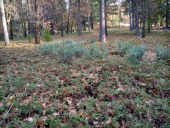
















![Filename: 02_brushcat_cutter-(1).jpg
Description: [Thumbnail for 02_brushcat_cutter-(1).jpg]](/t/60159/a/45467/02_brushcat_cutter-(1).jpg)




I make a Maple Syrup instructional movie! Check it out HERE
SKIP books, get 'em while they're hot!!! Skills to Inherit Property
See me in a movie building a massive wood staircase:Low Tech Lab Movie
 1
1




 1
1









J. Shapiro wrote:I have a hillside that's covered in 5-15 foot saplings that I'd like to clear. Whoever cut the timber on it before I bought the property just left it laying, so there are a fair amount of fallen hard- and softwoods to deal with as well. A local excavator quoted me $7-10K to clear it due to some sections being rather steep. I think his price is fair for the amount of work it would take him, but I'm hoping somebody has some experience with doing this in a cheaper and less industrial way, even if it takes a couple years.
I don't mind doing the labor of cutting and clearing/piling the saplings and dead wood myself, but I need a way to make sure they don't just all root sprout afterwards. Has anybody experimented with covering large sections of cleared forest with black plastic for a year or two?
Hit me with your ideas and experiences.
List of Bryant RedHawk's Epic Soil Series Threads We love visitors, that's why we live in a secluded cabin deep in the woods. "Buzzard's Roost (Asnikiye Heca) Farm." Promoting permaculture to save our planet.




 1
1




Moderator, Treatment Free Beekeepers group on Facebook.
https://www.facebook.com/groups/treatmentfreebeekeepers/











| I agree. Here's the link: http://stoves2.com |





